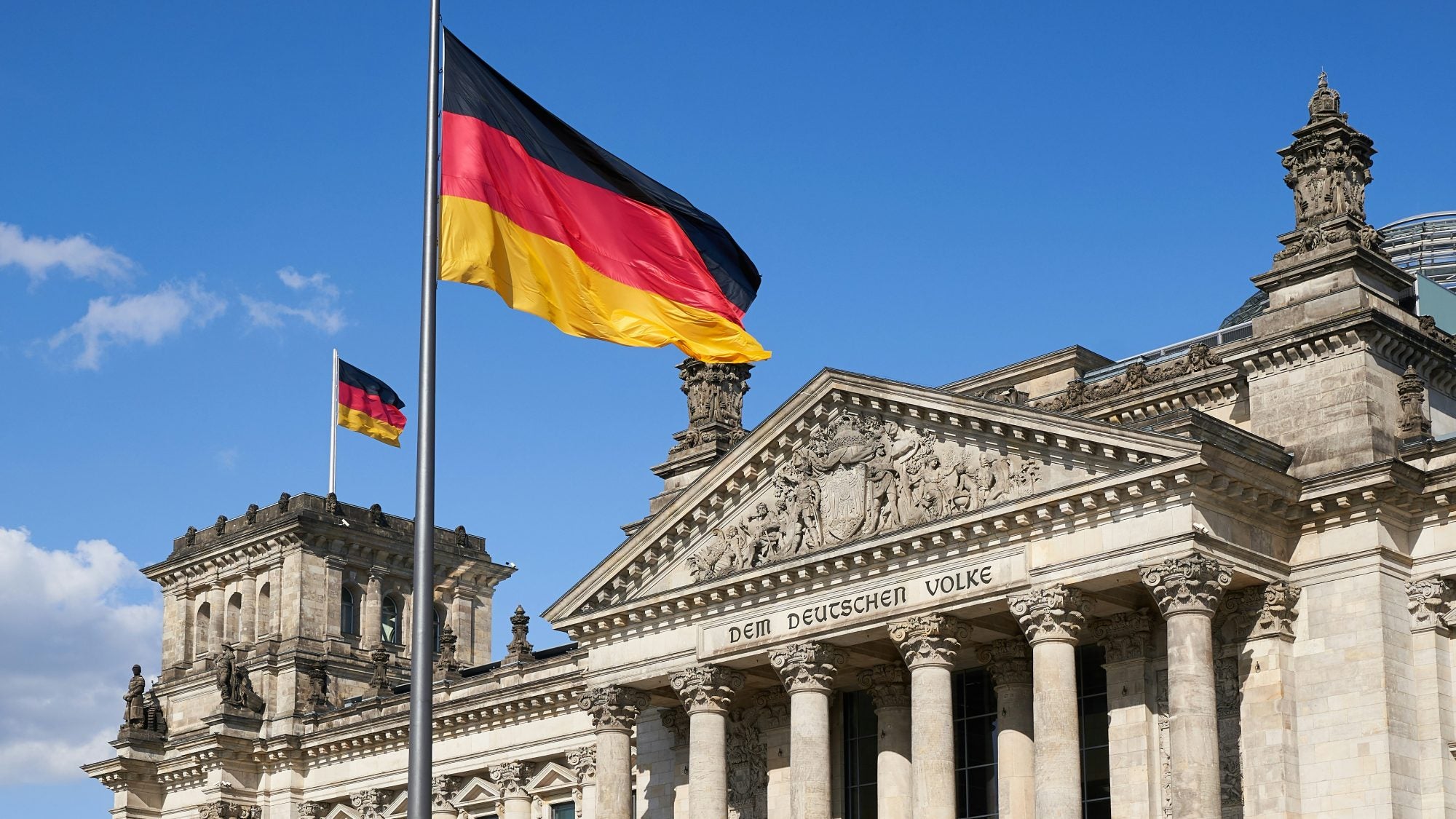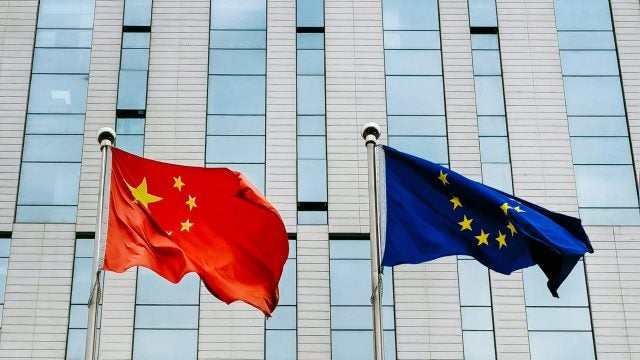
Title: Germany, China, and the End of the Post-Wall World
Germany’s economy is being throttled by a more competitive China that has usurped its previous manufacturing dominance in many industries. In response, Germany has doubled down on the China bet it made two decades ago rather than to address its current challenges. The advent of a new German government is an opportunity for the country to shore up its domestic competitiveness, build on its still-formidable strengths, stop outsourcing its China policy to a few big companies, and join its partners in the European Union (EU) to redefine Europe’s terms of engagement with Beijing. In the end, however, Germany’s biggest challenge is not China, it is grasping the realities of a Post-Wall world.
Germany and China in the Post-Wall World
For a quarter century following the fall of the Berlin Wall, mainstream sentiment in the newly united Germany believed the country had become the key European hub of a Post-Wall world: the exemplar of a magnetic, largely unchallenged, and gradually expanding Western-led order. In this new world, scores of young democracies, and eventually even Russia and China, could find a place. Growing interdependencies and open borders would minimize conflict and generate greater global security and prosperity. Such a world, so the thinking went, would not only be freer and safer but also very good for business.
Animated by this vision, Berlin’s dealings with Beijing were framed by the notion of Wandel durch Handel (change through trade). The theory followed that, with old barriers swept away, German companies would tap into China’s vast resources and growing markets and, as China developed a greater stake in the international rules-based order, its authoritarian traits would attenuate. Berlin thus supported China’s accession to the World Trade Organization (WTO) in 2001, believing that China would become a “responsible stakeholder” in the rules-based international system.
Germany was not alone in pursuing these policies with China, but for a time it reaped the greatest gains. While German consumers snatched up Chinese electronics, clothing, furniture, and appliances, German companies provided just what China needed: cars, chemicals, machinery, precision instruments, and engineering expertise. Germany’s exports to China increased four times faster than its exports to the rest of the world, and German firms’ profits in China helped support the higher wages of their workers back home.
It took many years for German policymakers and business leaders to recognize that China was shifting from a major customer to a primary competitor. They were certainly frustrated by Beijing’s cybertheft and assaults on intellectual property, as well as poor implementation of its WTO obligations, and state-subsidized overcapacity in steel. They were alarmed when Chinese manufacturer Midea took over the German firm Kuka, a world-class manufacturer of industrial robots. Some voices called for attention to China’s human rights abuses and its contestation of maritime straits critical to European trade. Nonetheless, as the prime beneficiary of the Post-Wall world, Germany preferred to look at China through the prism of economic opportunity.
Germany’s corporate leaders paid little attention in 2015 to Beijing’s “Made in China 2025” program, even though the plan was a near-mirror of what Germany knew as its own ‘Industrie 4.0’ strategy. Beijing wanted to free China from dependence on Western technologies while making the country a standout in several critical sectors, most of them areas of German strength. The new strategy essentially signaled China’s intent to become a bigger, better Germany, but with Chinese characteristics. Only as the last decade came to a close did the realization dawn that China’s new strategy presented a major challenge to Germany’s export-driven economic model.
The China Challenge Today
China’s challenge to Germany’s economic model has become much clearer over the past four years. China is gaining global market share in an ever-expanding set of industrial sectors, many of them the aforementioned areas of traditional German strength. China was a net importer of cars. Now it has become the world’s largest exporter. China used to import German equipment to produce solar photovoltaic panels. Today, Germany and most other countries around the globe import those panels from China. For years, China sought to learn from German know-how. Now, German firms want to tap into China’s technological expertise.
Germany’s once-vaunted trade surplus with China has transformed into a growing trade deficit. German exports to China as a share of German GDP have fallen for the past three years—a half percentage point hit to the German economy, while imports remained essentially the same. German corporate sales in China have also slumped, with the combined BMW-Mercedes-Benz-Volkswagen share of the Chinese market shrinking from a peak of 26.2 percent in 2019 to 18.7 percent today.
The real challenge is in Germany’s home European market, where German industry has lost market share to Chinese rivals in sophisticated industrial products. China’s share of EU imports in the electrical industry, for instance, has long overtaken that of Germany. China has also outcompeted Germany in photovoltaic and electric batteries and is likely to do so again in wind energy and electrolysers for hydrogen production. Advanced goods now account for roughly three-fourths of all Chinese exports to the EU; in 2000 they only accounted for half.
Germany’s China challenge is compounded by other problems. Many, but not all, are home-grown. The German economy never reached full recovery after the COVID-19 pandemic, and it is currently experiencing the longest period of stagnation since the end of World War II. Chronic underinvestment has left the country with unreliable railways, aging power grids and patchy mobile networks. Energy costs have soared in the wake of Russia’s invasion of Ukraine. And now U.S. President Donald Trump has imposed tariffs against Germany and its EU partners.
For years, governments under Angela Merkel and Olaf Scholz did little to address the China challenge. Scholz proclaimed that the real task of de-risking from China lies with companies, not governments, even though major companies such as Volkswagen are under public-private ownership. Scholz opposed, but could not block, the European Commission’s decision in 2024 to impose higher tariffs on subsidized Chinese EVs. Meanwhile, BMW, Volkswagen, and Mercedes-Benz announced hefty new investments in China.
What Can Germany Do?
The advent of Germany’s new coalition government, led by Friedrich Merz and his Christian Democrats together with the Social Democrats, is an opportunity for the country to address China and related competitiveness challenges. Just days after Germany’s February 2025 elections—and before a new German parliament was even in place—the parties agreed on a stunning $1 trillion spending package on infrastructure and defense. They amended Germany’s constitutional debt brake, which limits Germany’s structural deficit to 0.35 percent of its GDP, by exempting special defense and infrastructure funds from the debt calculation and loosening strict debt rules for Germany’s regional states.
While these speedy decisions were sparked primarily by German anxiety over the reliability of the Trump administration, this massive economic stimulus program promises to boost GDP growth, partially offset the negative effects of U.S. tariffs, and put Germany in a better position to tackle the China challenge. It signals a first attempt to rebalance Germany’s heavy reliance on exports by stimulating domestic demand.
The new government’s fresh start will have an even greater impact if it takes three additional steps. The first is to build further on German strengths. German manufacturing remains productive and competitive, even if the number of manufacturing jobs has fallen. Germany is also a leading services economy; its edge lies in the embedded services that power its manufacturing. Germany’s defense industry is booming. Jobs are growing in sectors requiring high-skill labor, such as IT, digital services, clean technologies, and biosciences. Reforms must bolster the German Mittelstand of small and medium-sized companies that are so adept at integrating cutting-edge innovation into their specialized products and processes that they are often the most competitive in the world.
Second, the German government should stop outsourcing its China policy to a handful of large automotive and chemicals companies. Germany’s corporatist culture has long identified the well-being of its largest firms with the well-being of the country. But what’s good for Volkswagen isn’t necessarily good for Germany. Simply because these companies placed bad bets that made them dependent on China does not mean that the German economy as a whole is so dependent; only around 3 percent of German jobs are related to exports to China. Germany exports more to Poland than it does to China.
Third, the coalition’s actions will have an even greater effect if they are supplemented by initiatives that bolster the competitiveness of the European Union. The International Monetary Fund estimates that the EU’s high internal barriers are equivalent to a 45 percent tariff for manufacturing and 110 percent for services. Trade across “Single Market” countries is less than half the level of trade across U.S. states. Mario Draghi, a former Italian prime minister and European Central Bank president, argues that the EU needs to commit $542 billion in public and private investment in digital transformation and clean technologies if it is to keep pace with the United States and China. Uneven policy coordination among the 27 EU member states is a further structural disadvantage to growth at a time when both China and the United States have unabashedly embraced modern-day mercantilist industrial policies designed to promote security and economic self-reliance. A true European Single Market and an integrated European Capital Markets Union would attract additional investments, enable industries to scale up, and reinforce Germany’s highly connected supply chains.
Germany should lead the EU’s approach to China, rather than undermine it whenever it sees short-term opportunity. China is twice as dependent on the EU as the EU is on China for strategic imports; thus, the EU can make itself more indispensable to China than China is to it. It can make more active use of its now-robust toolbox to investigate highly subsidized Chinese companies, block investments from China if EU bidders are shut out of China’s market, and apply levies to businesses or countries using coercive tactics.
Germany’s primary challenge is not China, it is to grasp that the Post-Wall world has given way to a far more volatile age of disruption. There are signs that the German giant is waking up to this new era. Addressing disruptive changes will be challenging for a country whose watchwords have been caution, stability, and “No Experiments!” Yet the world’s third-largest economy and one of its critical connective nodes is well-placed to thrive in a future that will be more multihub than multipolar.
. . .
Daniel S. Hamilton is a senior non-resident Fellow at the Brookings Institution and the Foreign Policy Institute of Johns Hopkins University’s School of Advanced International Studies. Former U.S. Deputy Assistant Secretary of State. Recent publications include Meeting China’s Trade and Tech Challenge: How the US and Europe Can Come Together and The Transatlantic Community and China in an Age of Disruption. Ph.D/MA, Johns Hopkins SAIS; BSFS, Georgetown University.
Image Credit: Norbert Braun, Unsplash Content License, via Unsplash.
Recommended Articles

This article contends that South Africa’s 2025 G20 presidency presents a critical opening to shape governance of critical mineral supply chains, essential for renewable energy, digital economies, and national…

In 2021, the European Union (EU) attempted to assert itself in the Indo-Pacific arena to increase its geopolitical relevance by releasing an ambitious and multifaceted Indo-Pacific Strategy. However, findings from…

Foreign employers have the potential to influence cultural norms and improve female employment outcomes in regions with historically low female labor force participation (FLFP), such as the Middle…